EPCOT (Orlando, Florida)
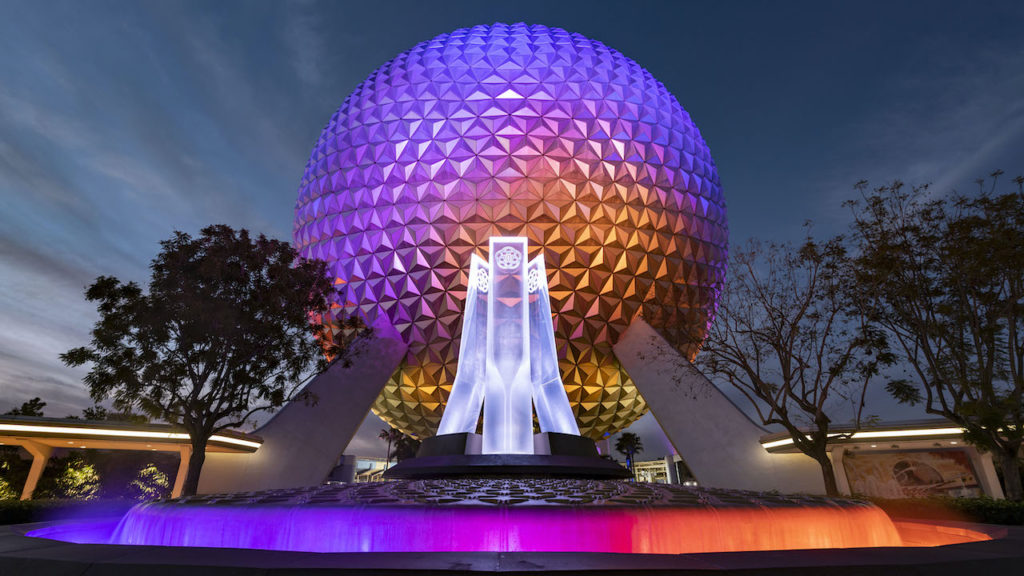
Opened: October 1, 1982
Background: In a class all its own is EPCOT – the third Disney Park ever built, and the first to reside outside the “Castle Park” continuum. EPCOT was a “Hail Mary” pass by Disney’s leadership at one of the company’s darkest moments – a big, audacious project that was expensive, ambitious, and lofty in its concept. Twice the size of Magic Kingdom, the park was something very different than anything that most people associated with “Disney.” Entirely free of animated characters, the park was split into the realms of Future World and World Showcase – a permanent World’s Fair dedicated to industry and culture.
Pathways: Naturally, EPCOT did not lend itself to the “hub-and-spokes” layout, but something very different. It’s probably most accurate to call Epcot’s structure a “figure-8,” with each of the two halves circumnavigated to access the massive “pavilions” that lie around the park’s perimeter.
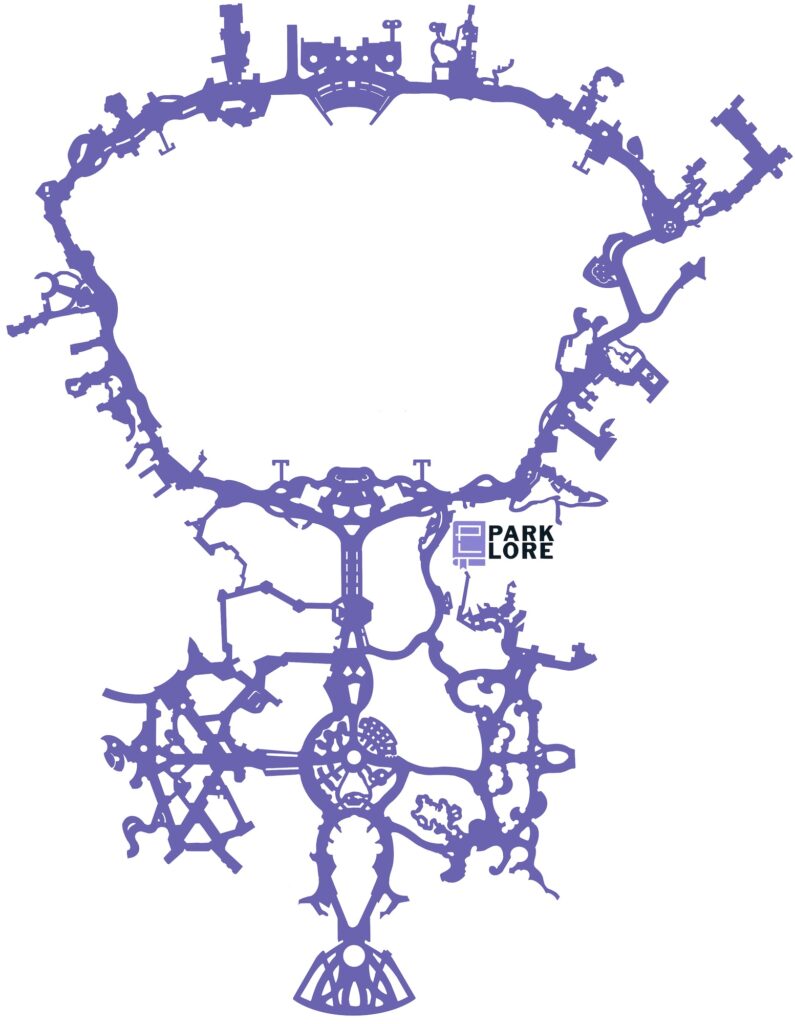
That broad shape is about all that’s left of EPCOT Center as it opened in 1982. Each of Future World’s pavilions was designed to feature an in-depth, informative dark ride through the history and future of its given industry. Each has disappeared (see Park Lore’s Lost Legends: Universe of Energy, Body Wars, Horizons, World of Motion, Journey into Imagination, Kitchen Kabraret, and The Living Seas entries for the full stories).
So, too, has the intentional dichotomy of Future World and World Showcase. As part of a wave of master-planned expansion from 2019 to 2023, Future World was subdivided by arbitrary delineations of convenience into Disney’s go-to (cop-out) organizing principle: loosely connected neighborhoods. Linguistically, World Celebration, World Discovery, and World Nature fundamentally mistake why World Showcase’s name works.
But even so, the park’s built-in paths do suggest that even in ’82, there was some intentionality (or at least, happy coincidence) to the “soft” sciences like oceanography, agriculture, and creativity being grouped together on one side of the park with rounded, flowing paths versus pavilions dedicated to “hard” science like energy, space, and transportation coalescing opposite, and on angular, sharp pathways.
Epcot is a work in progress, and (hopefully) always will be. While many fans aren’t quite sold on the next iteration of its design, most of the park’s paths are 1982 originals.
The “Studio” Parks
You’ll find bonus layouts of Universal Studios Hollywood and Universal Studios Japan, only on our Park Paths Twitter thread!
Disney’s Hollywood Studios (Orlando, Florida)
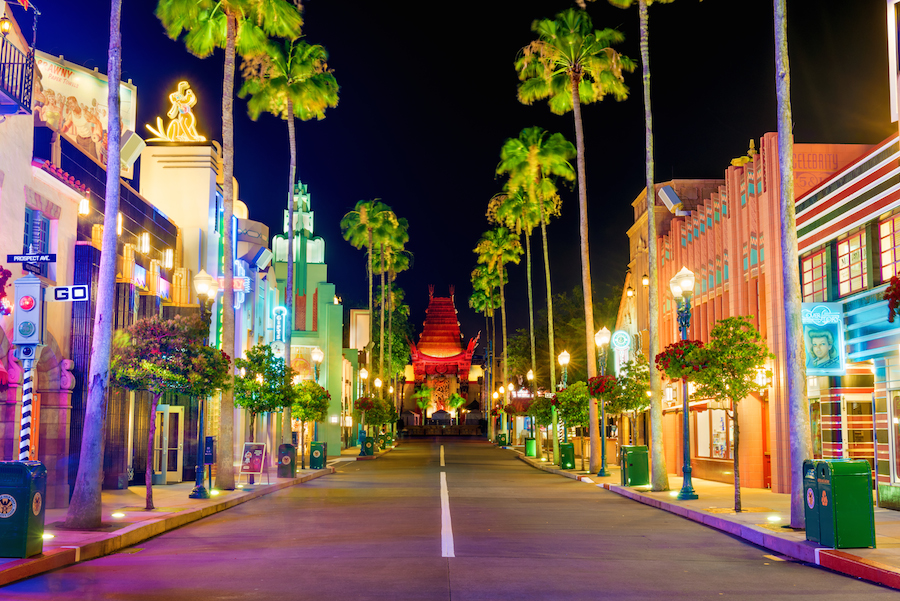
Opened: May 1, 1989
Background: When the Disney-MGM Studios opened in 1989, only the park’s Hollywood Blvd. and Echo Lake areas were open to foot traffic. The rest of the park was accessible only via the Studios’ feature presentation: a multi-hour, tram-and-walking tour – the Declassified Disaster: The Backstage Studio Tour – stolen right out from the playbook that soon-to-be-competitors Universal Studios had intended to implement at their own Florida park, which was under construction at the same time.
But demand for the tiny park quickly exceeded supply, leading Disney to reroute the tour and open the “Streets of New York” to foot traffic. “Mickey Ave.” soon joined, repurposing backlot space for guest capacity. Especially since it quickly became apparent that real film and television production of size wasn’t ever going to come to the Disney-MGM Studios, it made sense that “back-of-house” roads soon became pedestrian paths. But clearly, the park’s purpose needed rethought with capacity and things-to-do at top of mind.
In 1994, Sunset Blvd. opened as a ready-made people-eating expansion reigned over by the Modern Marvel: The Twilight Zone Tower of Terror. In true “studio” style, much of what’s happened to the park since has been the piecemeal additions of one-off E-Tickets, soundstage swaps, and IP swaps meant to keep the park stocked with can’t-miss attractions. It wasn’t until 2018 that the park make a conscious shift to cover its “studio”-style origins with a whole new logo and identity, plus two “Living Lands.”
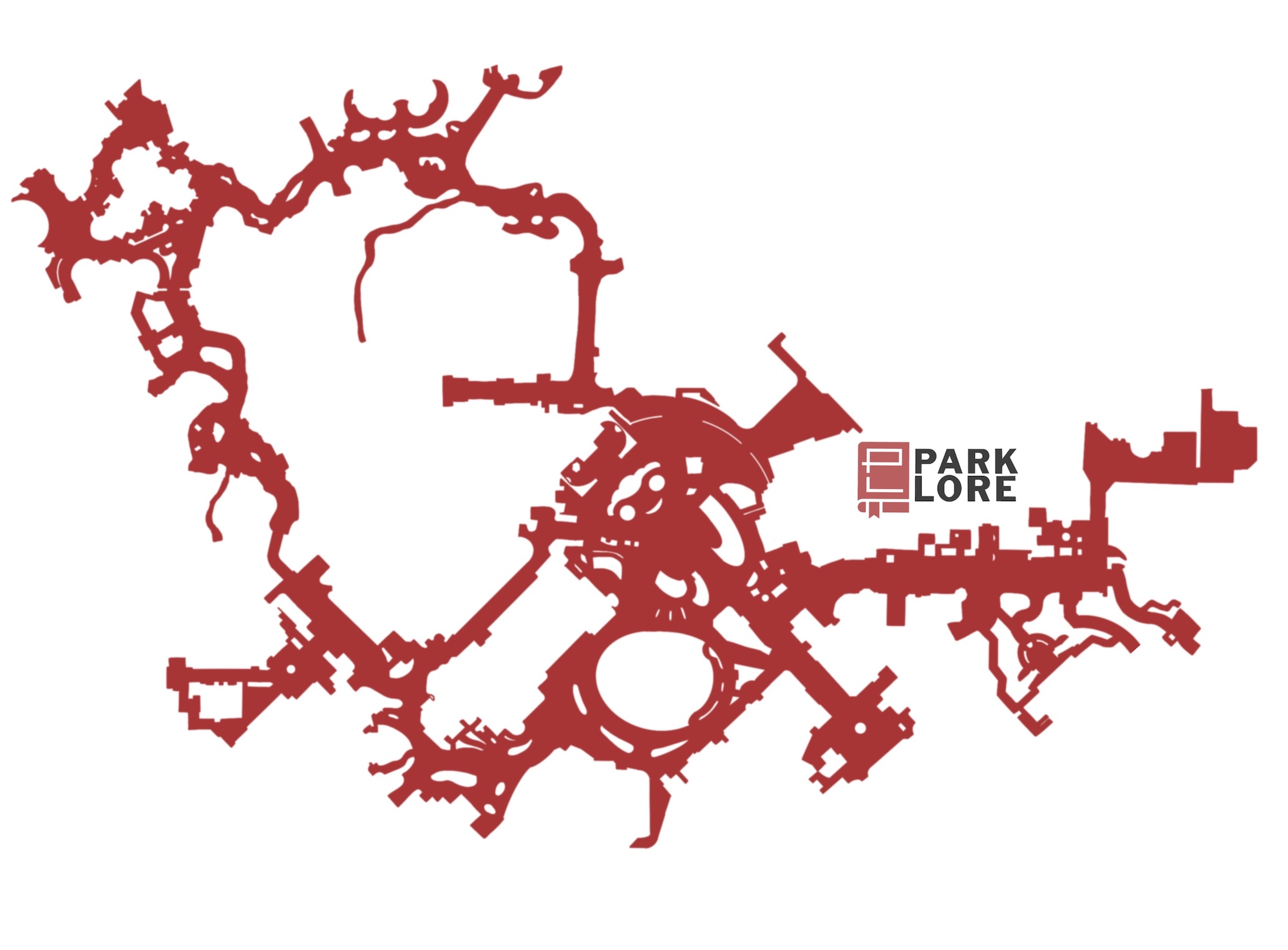
Pathways: So explaining Hollywood Studios’ paths is… not easy. Some of its areas are “”studio cityscapes” (Hollywood Blvd., Sunset Blvd., and Grand Ave.). Some are studio-style “backlots” with no attempt to disguise soundstages or mis-matched intellectual properties (Commissary Lane, Echo Lake). Some are just absolute nonsense (the dead-end Pixar Place with no attractions, and the Animation Courtyard featuring Star Wars). Then you have two “Living Lands” – Star Wars: Galaxy’s Edge and Toy Story Land – that have created an outer loop around the park…
Well-meaning fans (including me!) have tried to draft out how the paths of Hollywood Studios could be fundamentally redrawn to create an easy-to-traverse loop. The truth is, Hollywood Studios is a mess of dead-ends, vestigial plazas, and operational workarounds. Changing visions for what Disney’s “studio” park should be have lead to competing expansions that never gel into one concept. Its mix of streetscape, studio lots, synergy, and Star Wars visually communicate the content clutter inside.
It’s no surprise that Disney couldn’t land on a new name for the park… Sure, it’s not a “Studio” anymore. But… what is it?
Universal Studios Florida (Orlando, Florida)
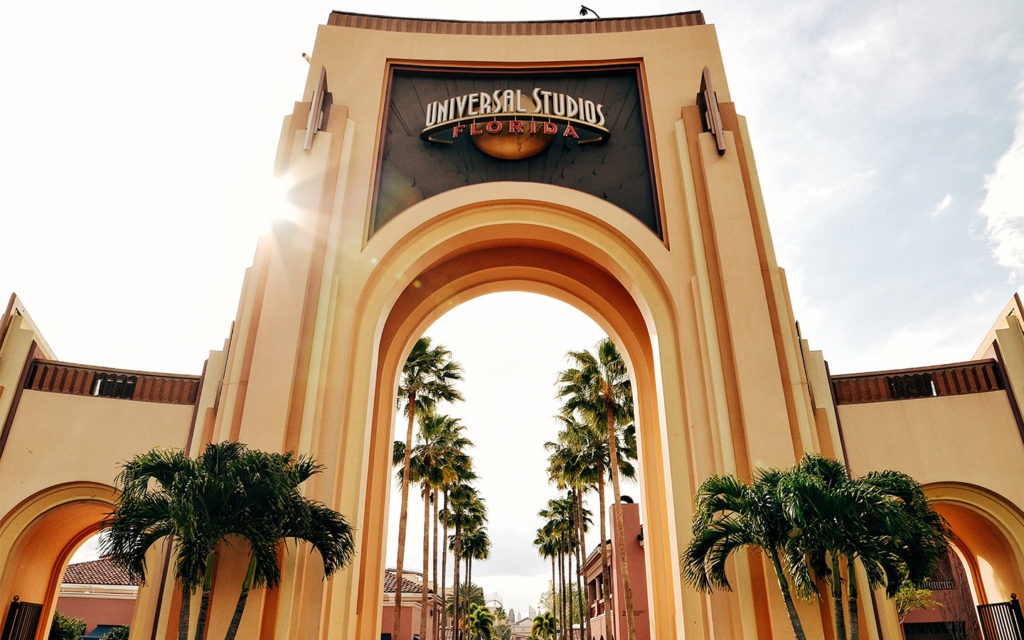
Opened: June 7, 1990
Background: Even though Universal’s original campus in Hollywood, California had been churning out films since the early 1900s (and whisking visitors through sets and special effects encounters on the tram-based Studio Tour since 1964), their California attraction was always a real, working movie studio first, and – gradually – a theme park second.
Universal Studios Florida was the company’s first chance to flip the formula, building a custom-made, master-planned theme park where guests could “Ride the Movies.” Whereas Disney’s competing “studio” park had taken Universal’s tram tour concept for their own, Universal’s park relied on big-budget, creature-feature rides – many expanded into standalone attractions after being mere tram tour vignettes in Hollywood.
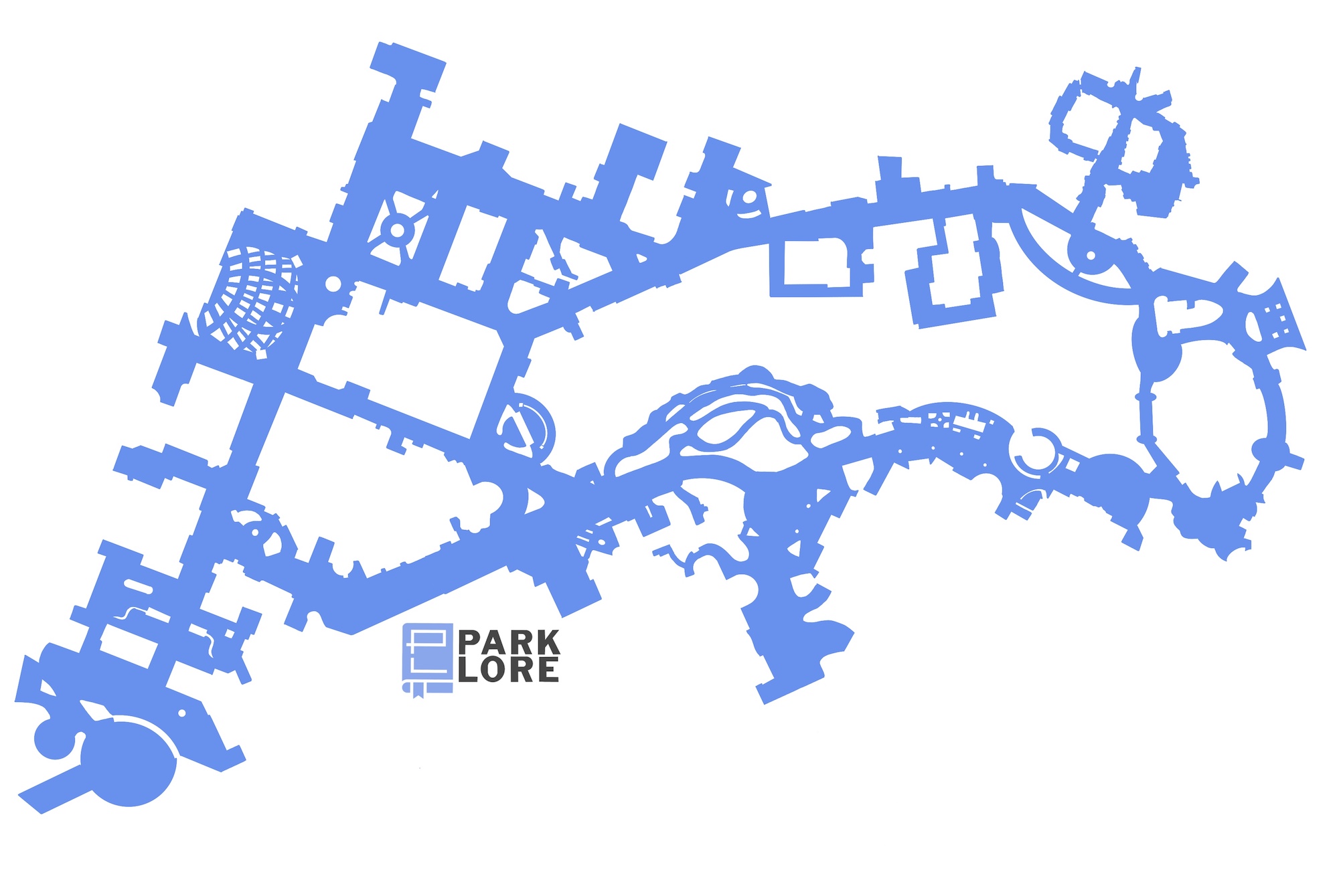
Pathways: With that said, there’s not tremendous artistry to Universal Studios Florida’s layout, but it works! Guests enter through the backlot-stylized Production Central, but the rest of the park’s areas take the shape of cities – New York, San Francisco, Hollywood, London, and Springfield from The Simpsons – largely positioned around a central lagoon that serves as a visual break from urban cross streets.
Altogether, there have been relatively few changes to the park’s paths in the last 30 years since IPs can merely be swapped into soundstages (hence how the spaces built for the Lost Legends: Kongfrontation, Jaws, T2-3D, and Back to the Future: The Ride now host The Mummy, Harry Potter, Bourne, and The Simpsons with little impact on the park’s core shape). In that way, Universal Studios Florida has also proven to be a better “flex-space” than Disney’s Hollywood Studios, and still reads as a consistent whole even with nearly every single one of its Opening Day Originals closed.
Walt Disney Studios Park (Marne-le-Vallée, France)
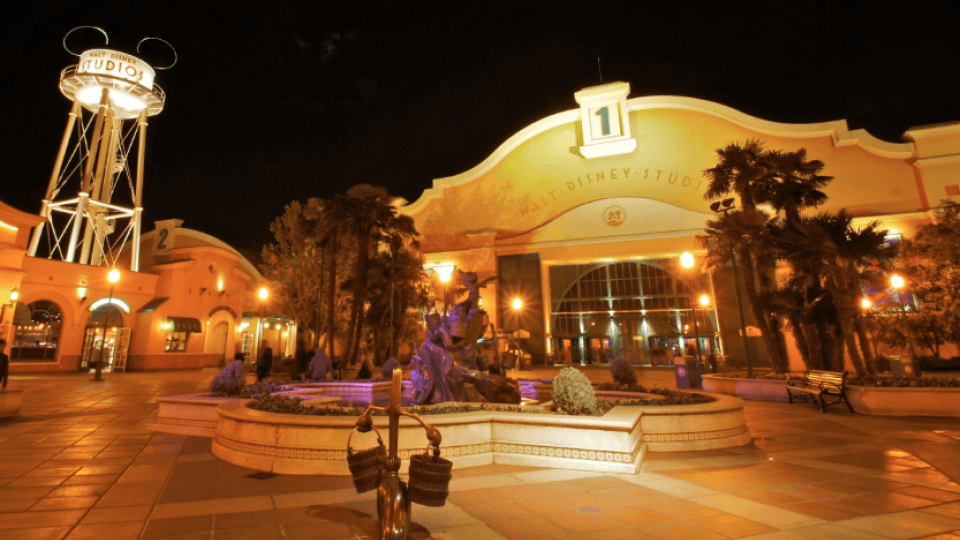
Opened: March 16, 2002
Background: Just being reminded of Walt Disney Studios Park is enough to give many Imagineering fans secondhand embarrassment. Opened in 2002, the unfortunate park was the result of infamous contractual obligation requiring a second gate in Paris despite Disney still reeling from the financial tribulations of the first.
It turns out that the budget-cut, post-Paris mindset of Michael Eisner, the creatively bereft “studio” styling, and the absolute lack of enthusiasm for a second gate in Paris formed the recipe for the worst Disney Park on Earth. Walt Disney Studios opened at about 30 acres (a third the size of Disneyland Paris) and with – ready for this? – three rides. Yep, three. A copy of Rock ‘n’ Roller Coaster, a Flying Carpets spinner, and a ride we rank among the worst of the century so far: a “Studio Tram Tour” without even the illusion of a studio.
In fact, we dedicated a full Declassified Disasters: Walt Disney Studios feature to the box office bomb of a park… and its haphazard turnaround. Very, very, very slowly, piecemeal fixes to the park’s lack of things to do have added one-off rides like Crush’s Coaster and a copy of the Twilight Zone Tower of Terror; a Toy Story Land of lightly-dressed carnival rides and – most recently – a miniature Parisian courtyard with the Modern Marvel: Remy’s Ratatouille Adventure.
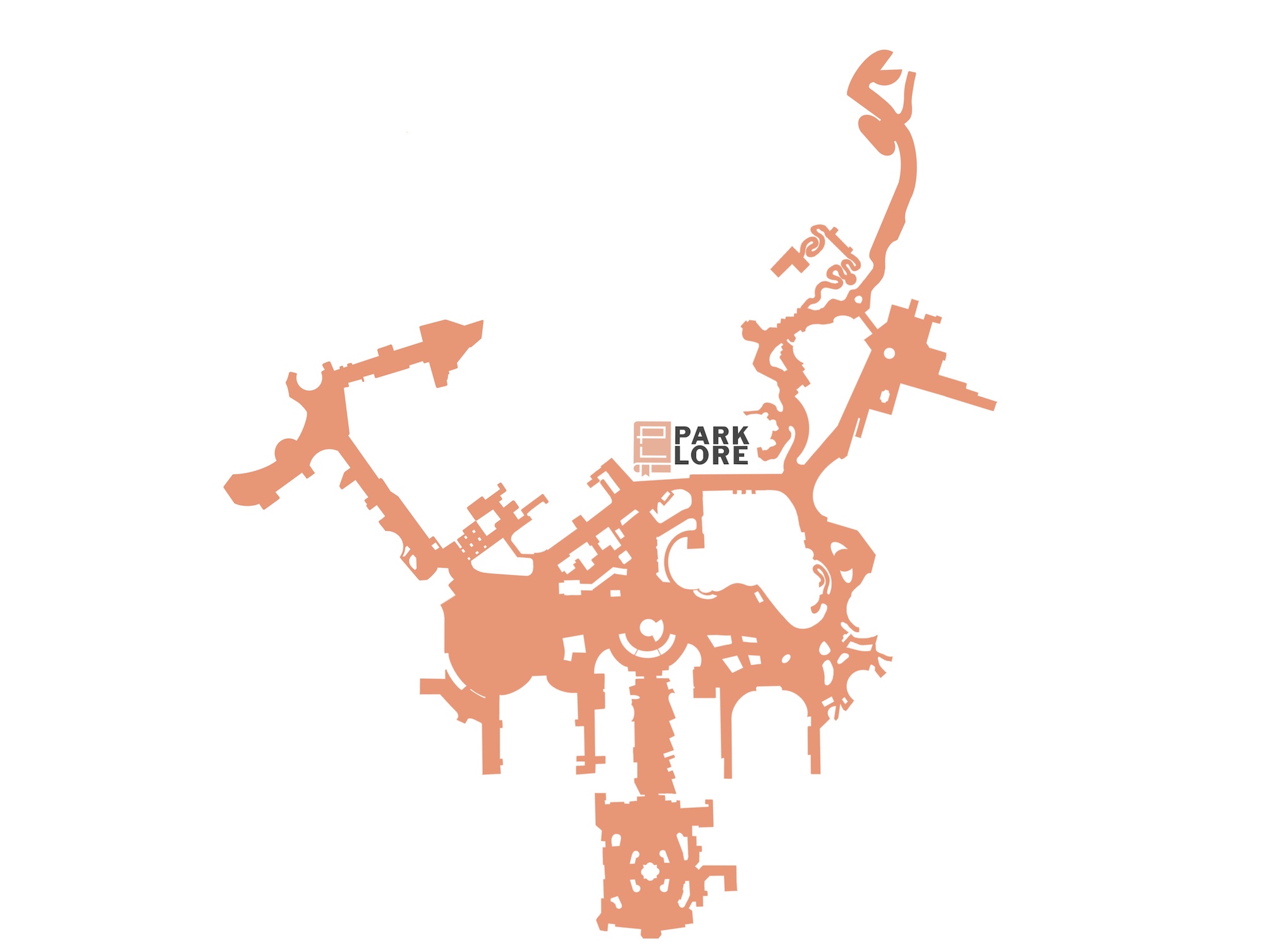
Pathways: In 2018, then-CEO Bob Iger announced a €2 billion reinvestment in the park. First, 2022’s Avengers Campus would reclaim the barren, industrial backlot as an industrial superhero training facility. Then, Walt Disney Studios would expand onto previously-undeveloped real estate by way of a new lagoon at the heart of the park with a collection of movie-themed lands around it. Concept art suggested that a land themed to Frozen and copy of Star Wars: Galaxy’s Edge would be the first, with perhaps Zootopia, Cars Land, or Pandora to follow.
Post-COVID, it looks like those plans have predictably been down-scaled. As of 2024, only The World of Frozen is under construction. Disappointingly, that’ll mean that the whole multi-year effort only amounts to the addition of Web-Slingers: A Spider-Man Adventure and a copy of EPCOT’s Frozen Ever After (with a long walk around a lake to reach it). In the meantime, Walt Disney Studios remains the smallest Disney Park on Earth… and as for its layout? Probably best not to even talk about it.
Even still, Walt Disney Studios remains the smallest Disney Park on Earth by far, and with the lowest E-Ticket count. To see just how serious the problem is, Members who support ad-free, clickbait-free, in-depth theme park storytelling on Park Lore for as little as $2 / month can see the two parks overlaid on one another above to compare their size. Become a Member to unlock this image (plus thousands of pieces of rare concept art across the site)!
Yes, this is really, for real, the size of Paris’ Disneyland Park (purple) and the pre-expansion layout of Walt Disney Studios Park (orange) overlaid atop one another, to scale… which perhaps explains why Disneyland Paris does not sell “Park Hopper” as an option, but includes both parks with every multi-day ticket.



